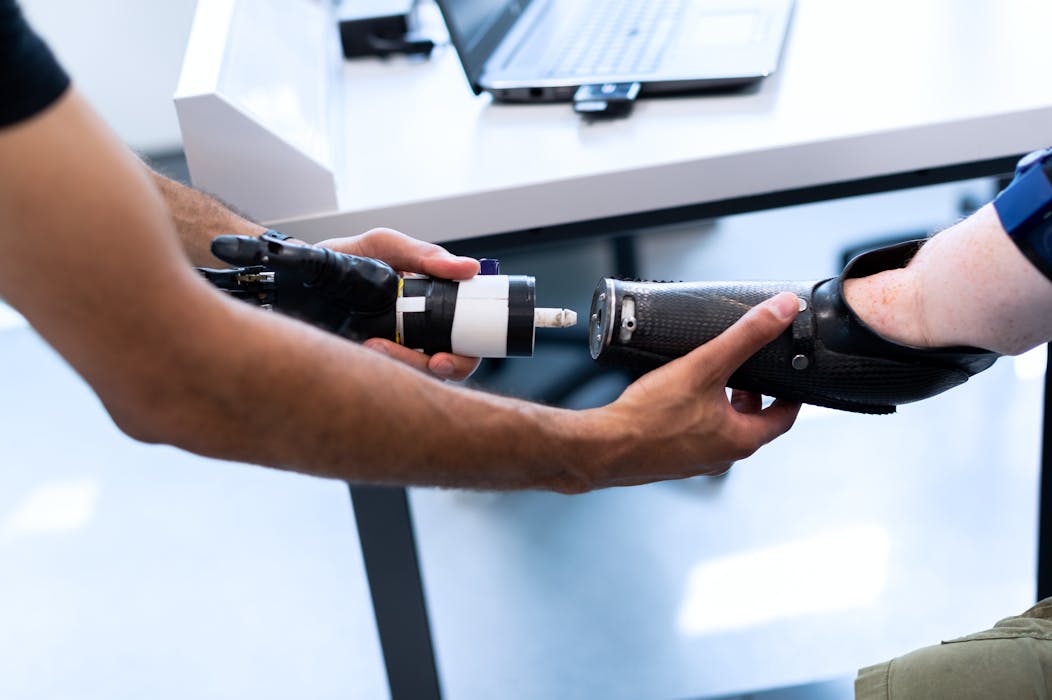This High Schooler Invented a Low-Cost, Mind-Controlled Prosthetic Arm

Controlling a robotic arm with nothing more than your thoughts. Does this sound like science fiction? For Benjamin Choi, a high school senior from Virginia, what once seemed impossible became a groundbreaking reality.
Locked away during pandemic isolation, Choi transformed a ping-pong table into an engineering workshop. Armed with curiosity, determination, and a $75 3D printer, he set out to solve a problem that had haunted him since childhood. A documentary he watched years earlier sparked a mission: create an affordable, accessible prosthetic arm that doesn’t require risky brain surgery.
Most prosthetic technologies remained frustratingly out of reach for millions. Expensive devices costing hundreds of thousands seemed like miracles reserved for the privileged few. Choi saw an opportunity to change everything – and he was just getting started.
Pandemic Project Begins
Sometimes, the seed of innovation is planted in the most unexpected moments. For Benjamin Choi, that moment came when he was just a third grader, watching a “60 Minutes” documentary about a mind-controlled prosthetic arm. The idea of controlling a machine with nothing but your thoughts felt like something out of a science fiction movie. But instead of being merely fascinated, young Benjamin was struck by something else: the technology was powerful, yet it came at a cost—literally and figuratively. The mind-controlled prosthetics featured in the documentary required expensive, invasive brain surgery to work.
Fast forward to 2020, and the world was at a standstill due to the pandemic. What many saw as a setback, Choi saw as an opportunity. With plenty of time on his hands and a strong desire to make a difference, he decided to revisit that childhood fascination. But this time, he wasn’t just watching from the sidelines—he was ready to act.
In his makeshift lab, the ping-pong table in his basement, Choi set out to solve a problem that many adults had avoided: could a mind-controlled prosthetic be both affordable and non-invasive? Instead of following the path of expensive and complex procedures, he decided to take the road less traveled—one driven by ingenuity, empathy, and a deep belief that innovation should benefit everyone, not just those who can afford it.
His motivation? To create a solution for the millions who need prosthetics but can’t afford the exorbitant costs. This was more than just about creating a device. It was about breaking down barriers to accessibility and showing that sometimes, the most powerful solutions come from seeing the world differently.
Affordable Prosthetics Without Surgery

Affordability drove Choi’s entire design philosophy. While traditional prosthetic arms cost astronomical amounts – with some advanced models reaching $500,000 – his prototype rang in at a mere $300 to manufacture. Basic upper limb prostheses typically cost around $7,000, making Choi’s invention a potential game-changer for accessibility.
Choi’s system leverages electroencephalography (EEG) to interpret brain signals without invasive procedures. He developed a two-electrode setup: one clips onto the earlobe as a baseline sensor, while another on the forehead collects brain wave information. A microchip inside the prosthetic arm receives these signals via Bluetooth, with an embedded AI model deciphering user intentions.
Developing accuracy required meticulous work. Choi collaborated with six adult volunteers, collecting brain wave data while asking participants to focus on hand movements. His algorithm learns and adapts, becoming more precise with each use. Mathematical precision backs up his approach – the algorithm boasts 978 pages of mathematical calculations and over 23,000 lines of code.
Choi’s algorithm achieves a mean accuracy of 95 percent, significantly outperforming previous neural network standards that hovered around 73.8 percent. Brock Wester, a biomedical engineer at Johns Hopkins University, described Choi’s work as remarkable, considering he developed everything independently. Machine learning allows prosthetics to understand individual users over time better. Each interaction helps the AI refine its understanding of specific brain wave patterns, making the device increasingly responsive and personalized.
How the Prosthetic Works
What makes Choi’s invention truly remarkable isn’t just its affordability—it’s the way it reimagines how prosthetics work. Traditional mind-controlled prosthetics require invasive brain surgery to implant sensors that read neural activity. Choi found a way around that.
Instead of surgery, his prosthetic arm uses electroencephalography (EEG), a technology that records brain activity through external sensors. His system relies on just two electrodes—one clipped to the earlobe as a baseline sensor and another placed on the forehead to detect brain waves. These signals are then processed using artificial intelligence (AI) embedded in a microchip inside the arm.
Here’s how it works:
- The forehead electrode picks up electrical signals from the brain.
- The signals are transmitted via Bluetooth to the prosthetic arm.
- The AI model, which Choi trained himself, deciphers the signals and predicts the user’s intended movement.
- The arm then responds in real time, moving based on the user’s thoughts.
But Choi didn’t stop at just brainwave control. He also added head gestures and intentional blinking as additional ways to control the arm, making the device more versatile for different users.
Revolutionizing AI in Prosthetics

One of the biggest challenges in brain-controlled prosthetics is accuracy. Reading brain waves is difficult, and even the most advanced AI models have struggled to interpret them with high precision. But Choi’s algorithm is exceptionally accurate—performing at 95% accuracy, significantly higher than the previous best standard of 73.8%.
How did he achieve this? Instead of relying on expensive lab data, he worked independently with volunteers to collect and analyze real brainwave data. Over time, his AI model learned and adapted, improving its ability to recognize and predict movements with greater precision.
A Device That Learns With You
Perhaps the most impressive part of Choi’s design is that the more someone uses the prosthetic, the better it gets. The AI continuously learns from the user’s brain wave patterns, personalizing the experience over time.
This isn’t just a prosthetic arm—it’s a step toward a future where assistive technology is smarter, more intuitive, and accessible to all.
Impact and Recognition
Choi’s invention quickly gained attention. He became a top 40 finalist in the Regeneron Science Talent Search and won awards at the Microsoft Imagine Cup and the Regeneron International Science and Engineering Fair. But for him, the real success wasn’t in trophies—it was in the lives his invention could change.
One of the first people to reach out was Joseph Dunn, an upper-limb amputee who saw Choi’s work online. Dunn’s feedback helped refine the prosthetic, making it more practical for real users. This hands-on collaboration proved that Choi’s innovation wasn’t just a science project—it had real-world impact.
His work also drew interest from researchers. He earned funding from MIT and collaborated with experts at Stony Brook University to improve his AI model. Now, his focus is on clinical trials, aiming to prove that a $300 non-invasive prosthetic can perform as well as, if not better than, the expensive alternatives on the market.
For Choi, this was never just about recognition. It was about making prosthetic technology accessible for those who need it most. And he’s making that a reality.

What’s Next for This Young Innovator?
Choi isn’t stopping here. His prosthetic arm is already a major breakthrough, but he knows there’s still more work to be done. His next goal is to conduct clinical trials with real patients, ensuring that his design is not just effective but ready for widespread use.
Beyond prosthetics, Choi sees even greater possibilities for his AI-driven brainwave interpretation technology. His algorithm could be adapted to control assistive devices like wheelchairs or even help patients with conditions like ALS communicate. The potential reaches far beyond what he first imagined when he started this project.
With two provisional patents already secured, he’s laying the groundwork for future advancements. As he heads to college to study engineering, he plans to keep improving the prosthetic and expand its real-world applications.
Making Prosthetics Affordable for All
Benjamin Choi’s journey proves that true innovation doesn’t require a massive budget or a high-tech lab. Sometimes, all it takes is the willingness to question the status quo and the determination to find a better way.
With a $75 3D printer and an idea, he created a prosthetic arm that challenges an industry dominated by expensive, invasive solutions. His design is not just an engineering achievement—it’s a step toward making assistive technology truly accessible.
But this isn’t just Choi’s story. It’s a reminder that breakthroughs can come from anywhere, from anyone, at any time. The real question is: What problems do we accept as unsolvable, simply because no one has dared to find a better way?
Maybe it’s time to start asking different questions. Maybe it’s time to be the one who finds the next solution.
Featured Image Source: Pexels
Loading...






